We all know how uncomfortable dry skin can feel, but when adding dehydration and an inefficient skincare routine, things get a lot more complicated. Whether we are talking about having a dry skin type or getting very dehydrated from external conditions, we are all in the same boat with itchy, flaky, and sensitized skin.
This article is dedicated to all of those struggling with very reactive and tight-feeling skin that needs special care and soothing products. We will address the leading causes for dry or dehydrated skin, great solutions to soothing it, and a unique guide for applying makeup on dry skin for a flawless result.
What Causes Dry Skin? Dry vs. Dehydrated
There is a notable difference between dry skin and a dehydrated one; dry skin is a skin type that lacks oil, while dehydrated is a skin condition that can happen to any skin type, which means lack of water.
However, the effects on the surface are very similar – the skin feels tight, it becomes frail and flaky, with visible scales; the skin becomes more sensitive and reactive, more prone to redness and irritation. It also loses elasticity, so it tends to show fine lines and wrinkles more.
Dry skin is usually something you are born with, meaning your sebaceous glands are fewer or less active. That natural skin oil is what keeps your skin soft and bouncy and makes it waterproof, meaning it prevents the water within the skin from evaporating (and excess moisture and outside harmful substances to go in).
When any type of skin becomes dehydrated, the cause is generally transepidermal water loss. The skin can become” leaky,” so it can’t hold on to water; this leads to dehydration, tight, itchy skin, visible scales, and even increased sensitivity.
As stated above, any skin type can become dehydrated, even the oiliest ones. But dry skin has a more significant risk of suffering from this condition, as it lacks the oil that naturally creates a barrier to keep water from evaporating. The dehydration makes dry skin feel worse, tighter, and uncomfortable, so creating a very thorough skincare routine is a must.
How to Prep Dry Skin for Makeup
When we deal with dry, dehydrated, flaky-looking skin, the cause is usually the natural skin barrier being compromised. This can happen because of:
- Dry and cold air during the winter outdoors, or dry air indoors, because of central heating systems;
- Harsh cleansers or excessive washing – always choose a gel cleanser with a pH level of 5.5 (slightly acidic, where the skin sits in perfect balance) for oily-combination skin. If you’re more on the dry side, go for a creamy or oil-based cleanser, and maybe skip washing in the morning;
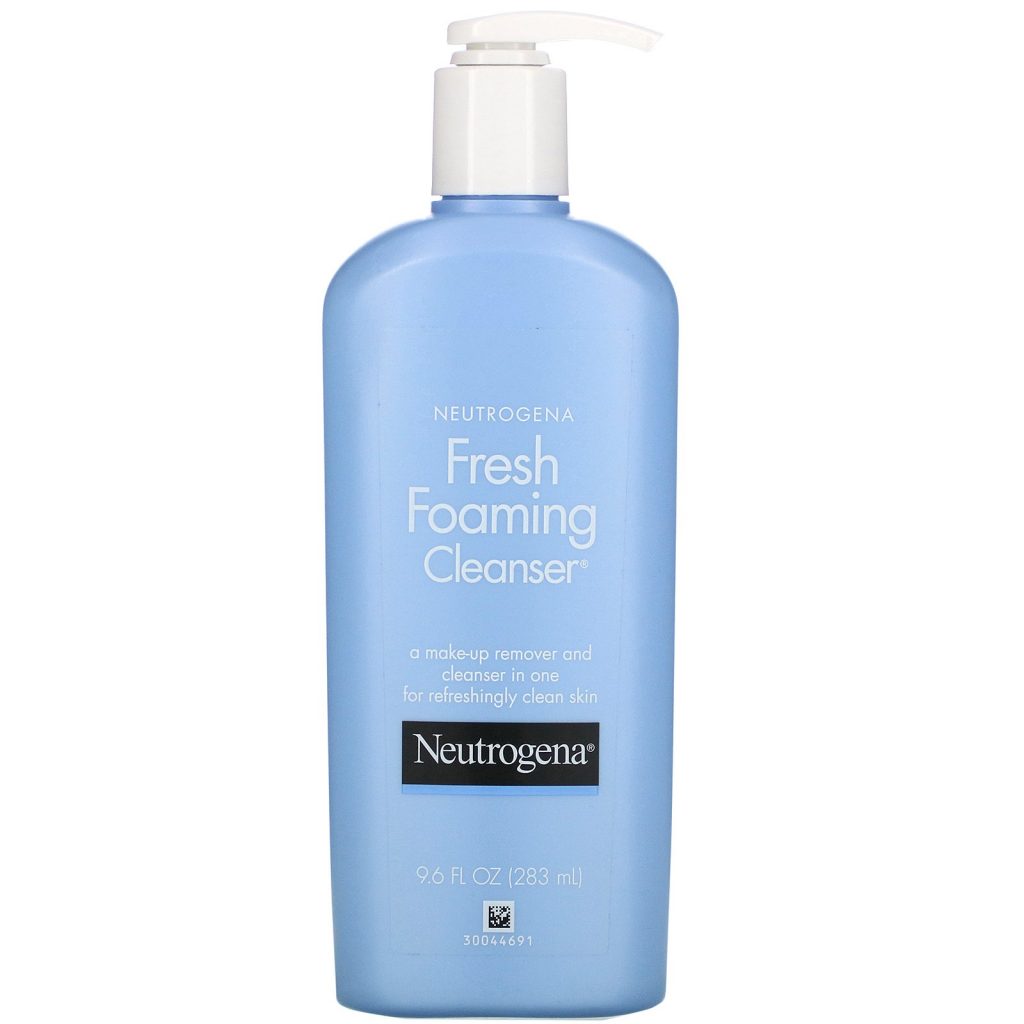
- Excessive treatments applied on the skin or over-exfoliating (with ingredients such as retinoids or alpha hydroxy acids). For a more extensive article on properly introducing active ingredients into your skincare routine, please check out this article on how to use retinol;
- Medicine – Accutane is an oral form of isotretinoin from the retinoid family. It is used to treat severe acne that doesn’t respond to topical treatments, and it shrinks the oil glands throughout the body. This can cause extreme dryness in some areas, most often hands or lips;
- Lack of emollients and oils – as stated above, oil keeps our skin waterproof. In other words, it seals in that moisture, so the skin can feel bouncy plump and keep that healthy barrier intact. When the oil is not there, because you naturally have a dry skin type or are stripped away, the barrier is compromised, and you get flaky, itchy, and sensitized skin.
There are many ways to reverse this dry and flaky skin process that seems to find no relief in simple products. For all the know-how on getting your skin replenished and that perfect, glowing makeup base, here are my best tips:
Exfoliate Regularly
As stated above, dry or dehydrated skin is often characterized by desquamation, meaning the skin is flaky and has visible scales. Besides the uncomfortable, itchy feelings it gives, this type of skin is also a problematic base for makeup, as products tend to cling to dry patches and emphasize the problem.
You can get flaky skin looking smooth again in one simple step: exfoliate on a regular basis. Using exfoliating acids has many benefits for your skin, such as decreasing the dead skin cell outer layer. This stimulates the production of new, healthy cells, revealing fresh and glowing-looking skin.
I am talking about alpha hydroxy acids (AHA), such as lactic, mandelic, or glycolic acid. They come in serums or toners, ranging from 5 to about 20 percent; they do a great job at exfoliating the dead skin layer, reducing hyperpigmentation, and visible scales, leaving a smooth complexion underneath.
AHAs also have humectant properties – meaning they help skin retain moisture better, so an overall excellent effect on dry skin. But keep in mind you can irritate the skin if you over-exfoliate, meaning using the product excessively; the skin may appear red, itchy, and fragile to touch. Keep in mind alpha hydroxy acids make your skin more photosensitive, so make sure to use sunscreen every day of the year, in sufficient amounts, and avoid excessive sun exposure.
Repair the Skin Barrier
The skin barrier is made of the top layer of the skin, meaning the stratum corneum (the dead skin cell layer), covered by a thin film. This film is called the acid mantle, or the hydro-lipidic film, having a slightly acidic pH of 5.5. This layer consists of a mix of sebum and sweat, giving the skin that waterproof quality and keeping everything in perfect balance – the pH keeps the natural flora in check while also maintaining the skin’s natural hydration level.
When this natural barrier becomes disrupted, problems such as sensitized, tight skin. To restore the skin to its optimal balance, we need to replenish the ingredients lost and soothe it with calming ingredients.
If the skin is overly sensitive, go for fragrance-free products, and use soothing agents, such as oat extract, Centella Asiatica extract, green tea, aloe vera, or licorice root extract. These will promote the healing process and soothe the skin back into feeling healthy and replenished.
Back Off on Treatments
If you feel like the problem might be over-exfoliating or excessive use of treatments (retinoids, antibacterials), you need to back off on them. Listen to your skin, and if it’s red, itchy, with a burning sensation, you’ve probably overdone it. Just lay off on any treatments for a few days and start soothing your skin.
Use Gentle Cleansers Only
Another crucial step is always to use gentle cleansers and don’t wash excessively. You will need to use a face wash twice a day for oily acne-prone skin because excess sebum not properly removed can cause blocked pores. But for more dry skin, using a double cleanse at night (oil-based makeup remover and a non-foaming cleanser), plus just water in the morning, should be fine.
Regardless of your skin type, choose a product with gentle cleansing agents and a pH of 5.5 to match that of your skin. By doing this, the skin’s acid mantle will remain intact instead of making it feel stripped and uncomfortable.
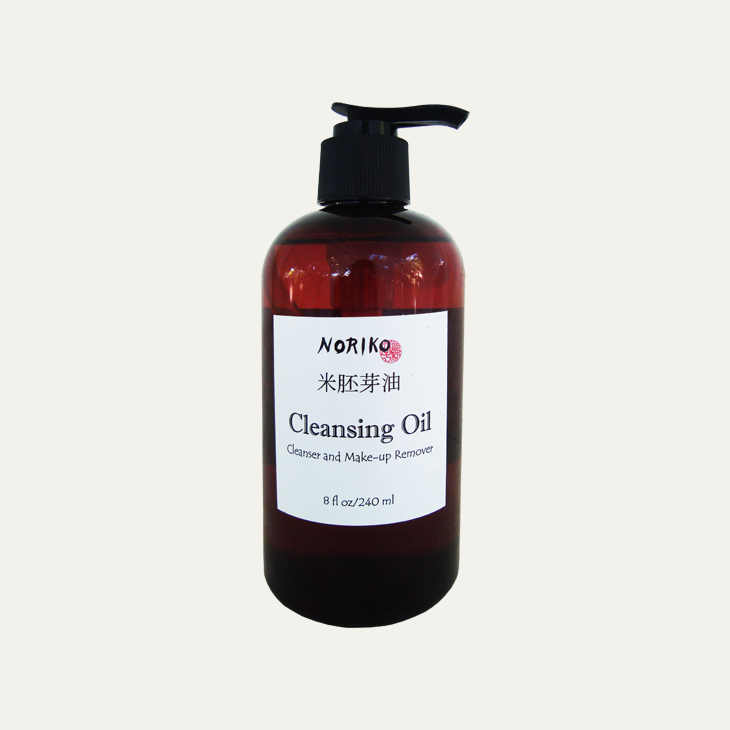
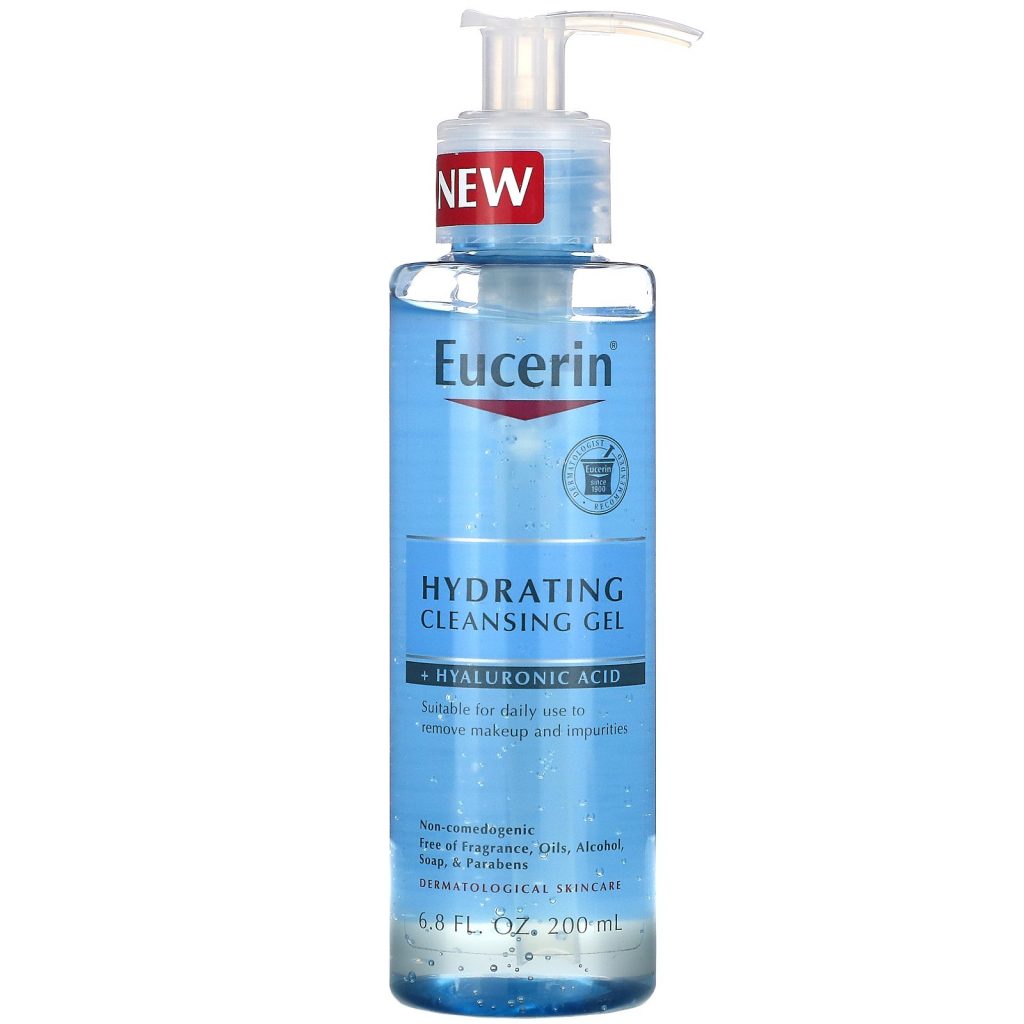
Add Moisture With Humectants
Now you need to add moisture to the skin. You can achieve this by using a humectant – a skin-identical ingredient that has the property of binding with water molecules. This means humectants can attract water within the skin and hold on to it. Examples of humectants include glycerin, aloe vera, hyaluronic acid, urea, and ceramides.
All of the above-mentioned ingredients can hold on to water, but they need to have that added moisture, to work. You can do this by applying them on damp skin or adding layers of watery products underneath or on top of them. You can combine them with liquid toners or mists or thermal water, which contains minerals (these substances can hold onto water too, so an added benefit).
You can usually find humectants in serums, but also tonners or light moisturizers. Combining a serum with a liquid toner, including different types of humectants, is a great idea. The newly added water can evaporate quickly, making the skin feel even drier, so it’s essential to immediately add the next layers of skincare products to seal in moisture.
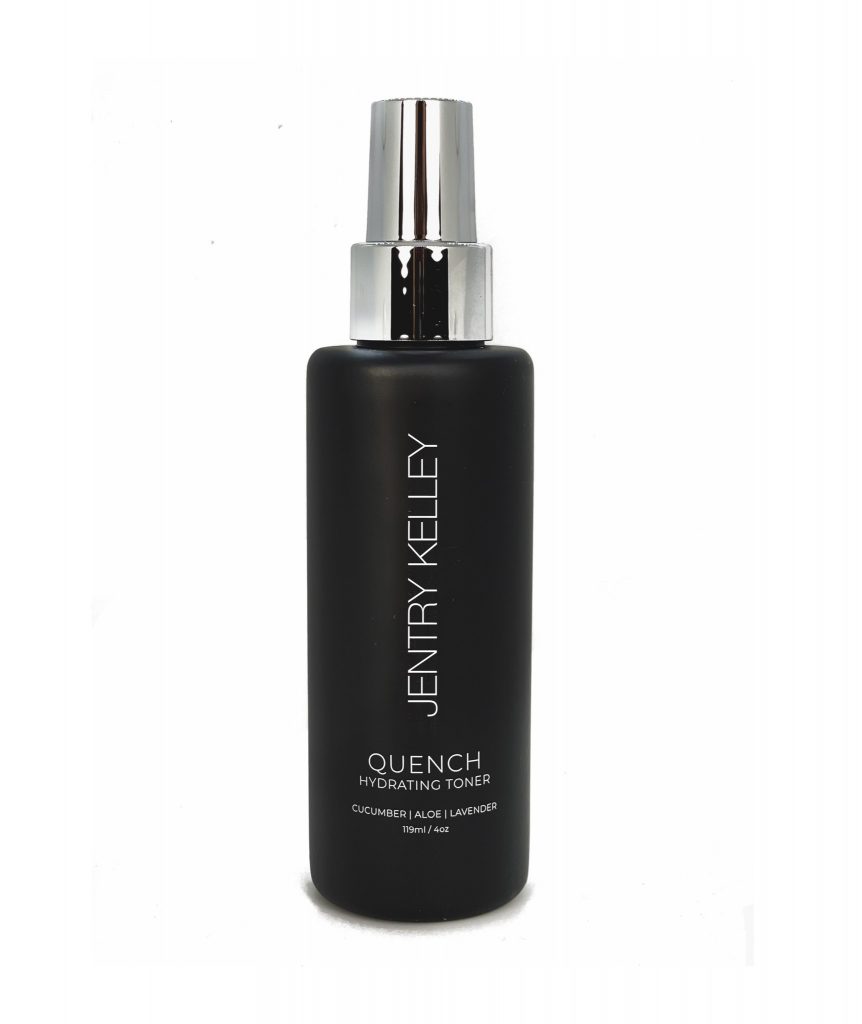

Replenish the Skin With Emollients
Emollients are ingredients that soften the outer layer of the skin and help the skin cells lay flat, making it feel smooth and plump. Examples of emollients are panthenol (also known as pro-vitamin B5), vitamin E, and silicones (such as dimethicone).
You can usually find emollients in light moisturizers suitable for oily or combination skin or heavier creams with more occlusive ingredients.
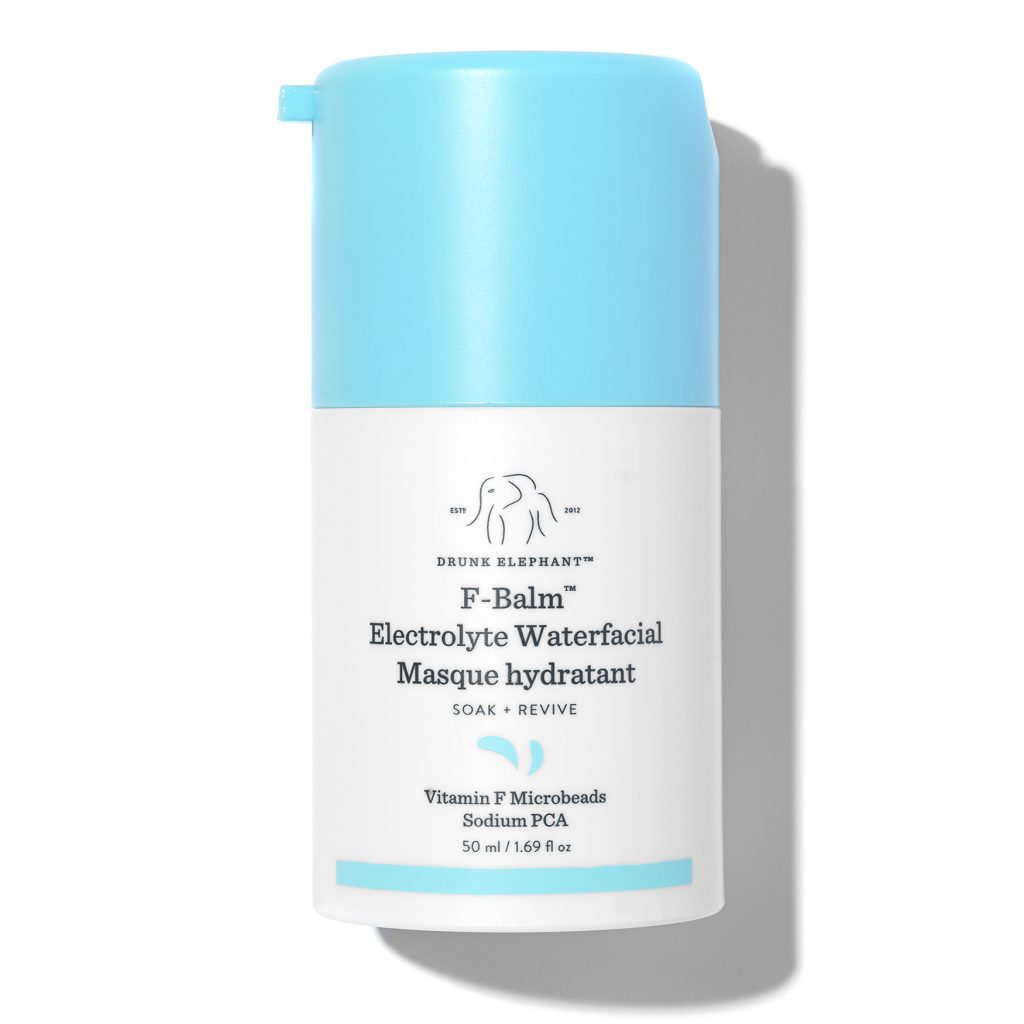
Lock in Water With Occlusives
Occlusives are ingredients that create a film on top of the skin, restoring that waterproof layer. Adding them as a last step will keep the water from evaporating and seal in the moisture. These ingredients include lanolin, beeswax, or different plant-based butters (shea butter, cocoa butter, macadamia, or kokum butter). You can usually find them in heavier creams or facial masks.
Plant oils are also excellent occlusives, a perfect substitute for the natural sebum, which usually creates the waterproof film on top of the skin. Dry skin types benefit more from richer oils, such as olive oil, almond, or argan oil, which can clog pores for acne-prone skin.
If you have more oily or combination skin, you can still use oils as occlusives. Just go for the more fluid ones that mimic the skin’s natural sebum and are unlikely to cause breakouts. Some examples include jojoba oil, squalene, primrose oil, or rosehip oil (this also has anti-inflammatory properties and helps heal hyperpigmentation quickly, so perfect for acne-prone skin).
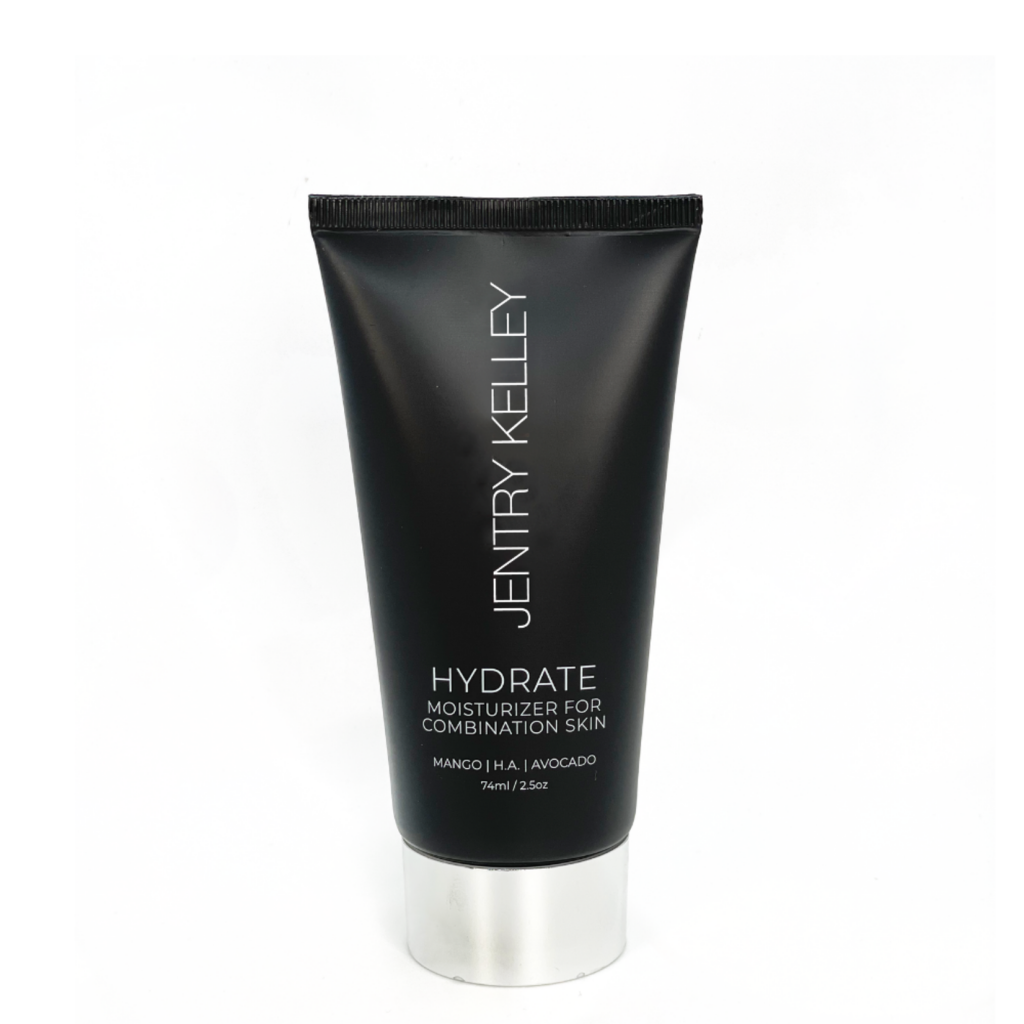
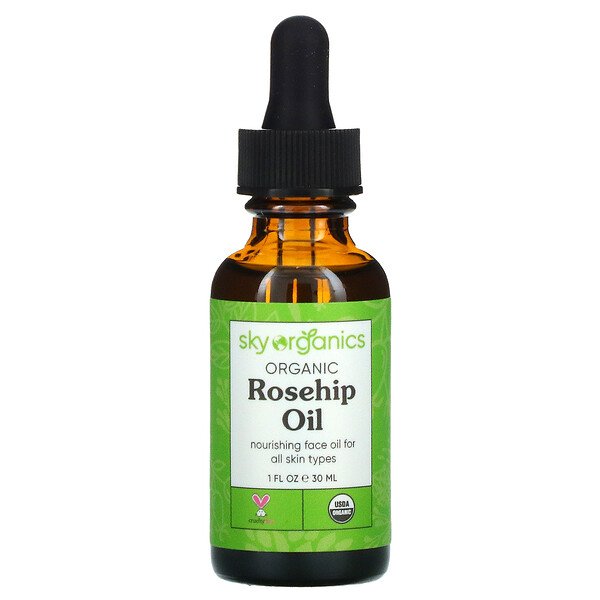
Create a Dewy Base
Now that you’ve managed to replenish your skin and repair that significant natural barrier, it’s time to start creating a perfect makeup base. Keep in mind that a luminous and hydrated look will give you the best chance for a flawless-looking complexion.
Start by cleansing your skin as you usually would – for very dry skin, you can just rinse it with water in the morning or use a gentle cleanser if you have combination skin. Then use a hydrating serum or a lightweight moisturizer to lock in moisture, and create a smooth base. Then wait a few minutes until they are well absorbed.
I love combining two products from Drunk Elephant, and it’s my secret for keeping my skin moisturized but not too greasy for makeup. I am taking B-Hydra Intensive Serum and Lala Retro Whipped Cream and mixing the two of them in my palm before applying them to my damp face. The serum includes humectants like hyaluronic acid and glycerin, while the cream is rich in oils and ceramides that lock in that moisture.
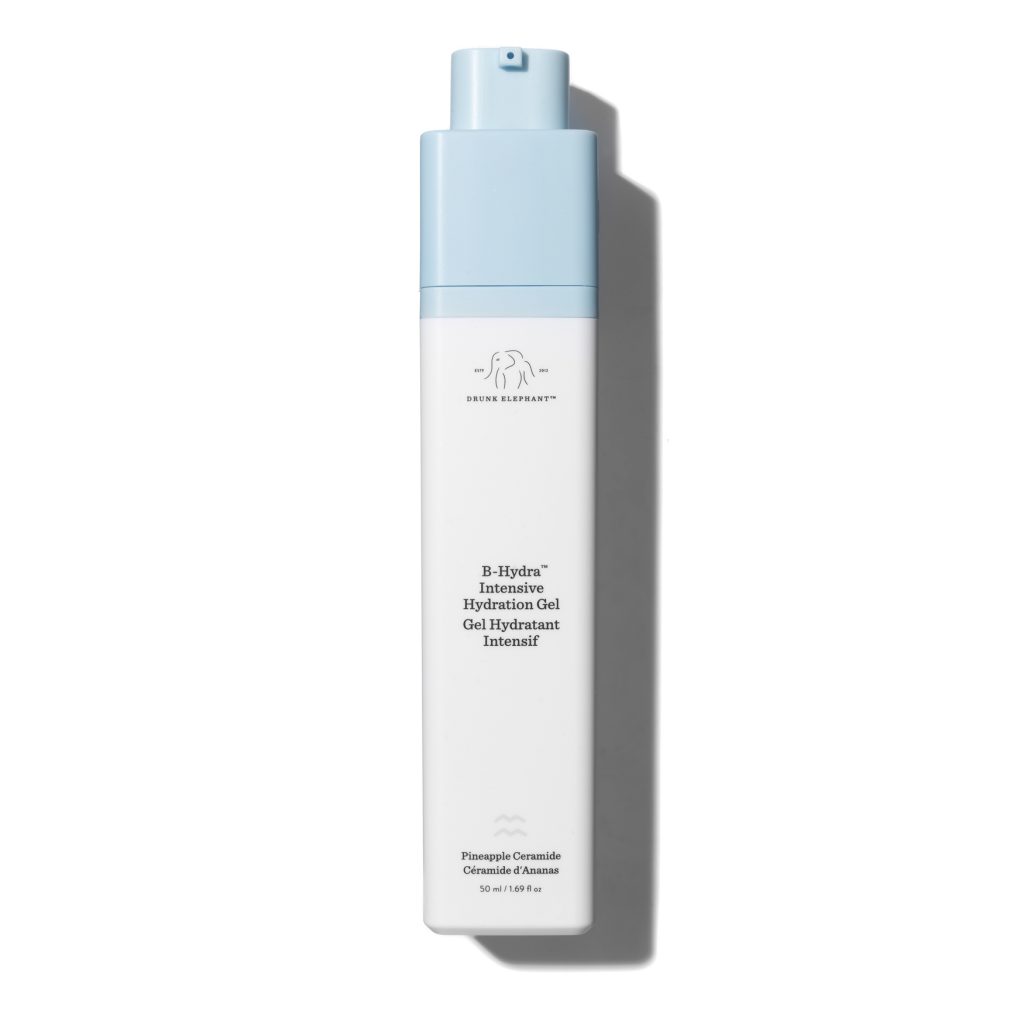
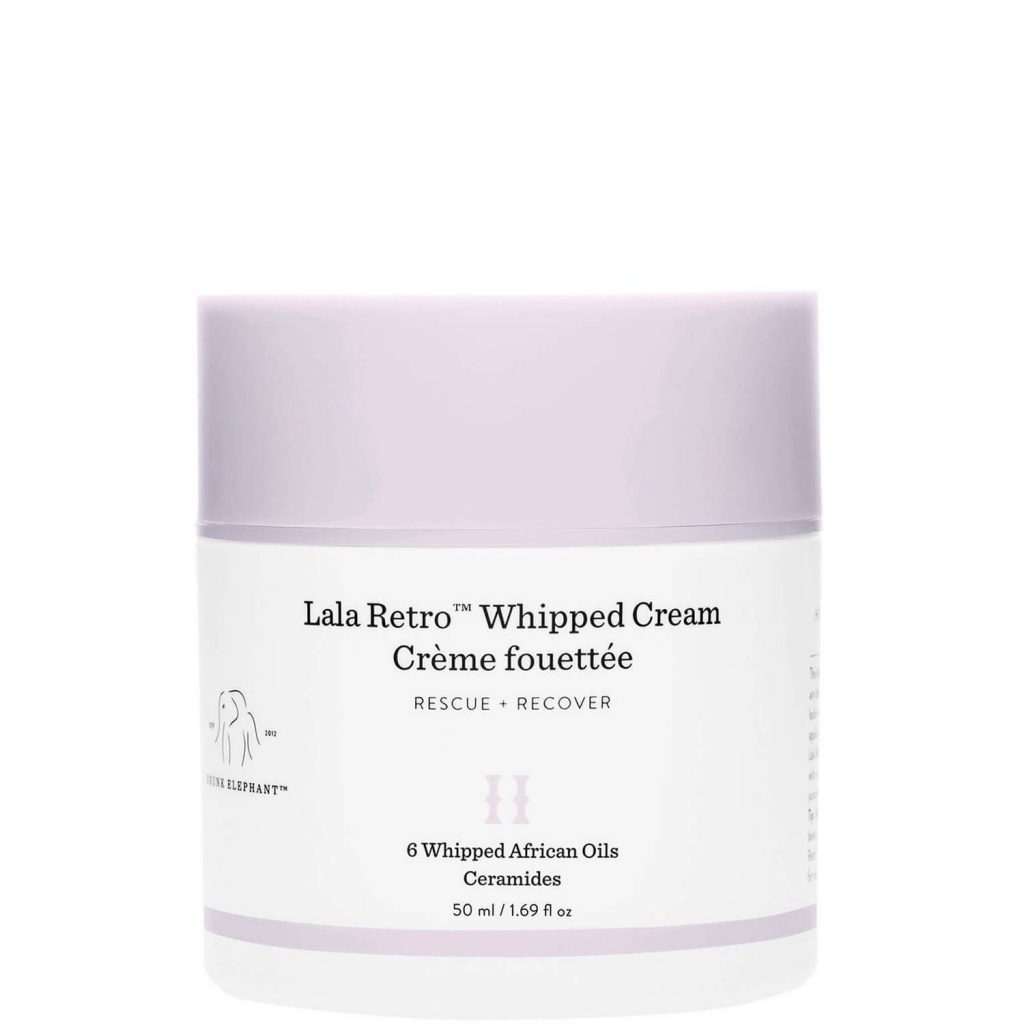
When applying makeup, it’s best to avoid using very heavy creams or facial oil because these will break down makeup and make it slide around. Remember, the most effective makeup removers are oil-based because heavy emollients break down foundations and powders, so stay away from them when wanting to keep your makeup on.
Your next step depends on the time of day you are applying the makeup – if it’s morning, always apply sunscreen with an SPF of 30 or higher, in sufficient amount. This is a crucial step, no matter the time of year or weather, to protect your skin from free radicals produced by UV-rays, as they can cause skin cancer and premature aging.
If you’re applying makeup in the evening, go directly to the next step, which is primer. This base is specially designed to create a smooth base and grip onto makeup to last longer. Primers can be lightweight for drier skin, usually water-based, or they can be heavier silicone ones to fill in large pores.
For dry skin, go for a light, very fluid, and hydrating primer; you can also choose an illuminating one to give the skin a glow-from-within look, but avoid very glittery ones, as they could emphasize wrinkles or other imperfections.
You could even skip applying a primer if you feel you got enough hydration from applying serums and moisturizers. But when you need extra longevity or help because of the state of your skin, primers can be your new best friend.

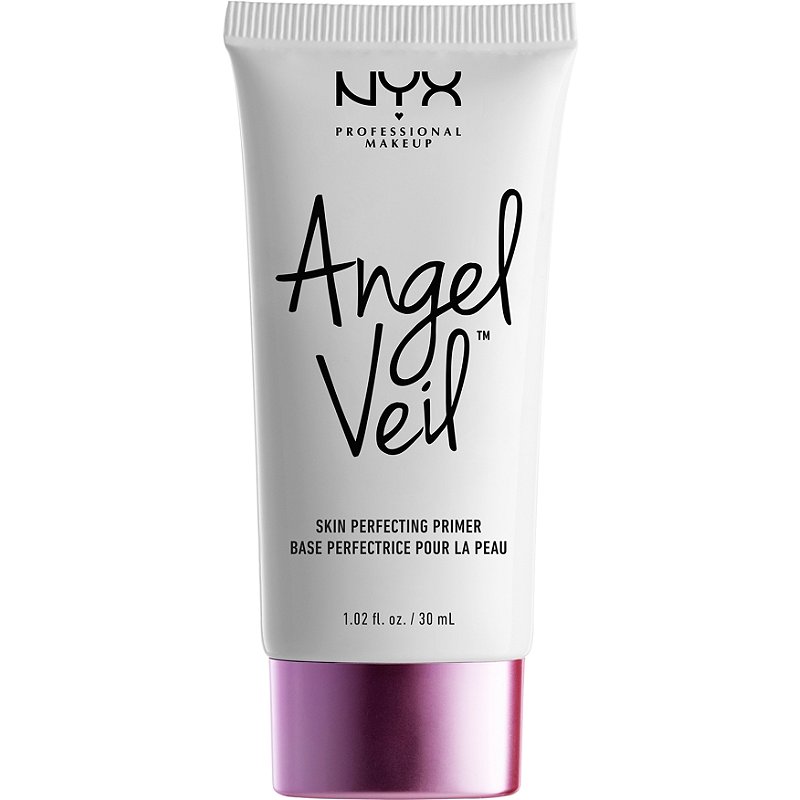
How to Apply Makeup on Dry Skin
Before going into every technique and the best products for dry skin, let’s set our goals here: we are going for a dewy and glowing base that doesn’t look cakey or emphasizes flaky skin. Too much makeup tends to settle into fine lines, while mattifying powders or foundations will cling to dry patches, making them look worse.
Please keep reading to get all the tips and tricks on how to apply makeup on dry skin for the best results and my favorite products that give a flawless finish.
For a demonstration of how to apply makeup on dry skin, watch the video here:
How to Apply Foundation on Dry Skin
When it comes to foundations for dry skin, creamy products with a dewy and hydrating finish are your best friends. Stay clear of mattifying foundation, as these are very powdery, and dry down quickly for a long-lasting effect. But they will cling to every dry patch, flaky skin, settle into your wrinkles, and give you a cakey and overdone look.
The best foundations for dry skin are usually water-based or contain different emollients and oils. They have a hydrating effect and give a glow-from-within look, making your skin appear more fresh and plump.
Dewy foundations do not dry down as quickly, giving you plenty of time to blend it well for a natural effect. Speaking of blending, the application technique is crucial here; the best route is to take a damp beauty blender type sponge; take one to two pumps of foundation and dab it on your skin, then bounce it off with the damp sponge until the product is melted seamlessly into the skin.
When dealing with dry skin, the last thing you want to do is stir up those scales; if you are using a brush to apply your foundation, the bristles will most likely do just that, mainly if used in circular motions. Go for a damp sponge instead because this uses patting motions that flatten those flaky bits instead of raising them to the surface.
Plus, a beauty blender used damp will give you the most natural finish and take away excess product; paired with the proper foundation, you will be left with the most beautiful glowing skin. Please watch this video for more ideas on the best foundations for mature and dry skin.
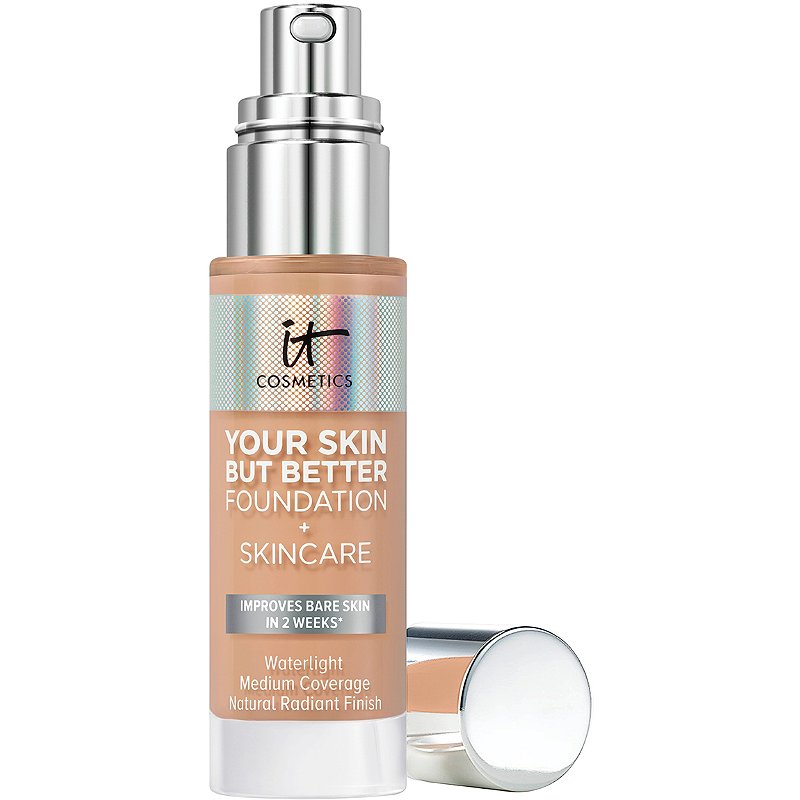
Apply Concealer Sparingly
The under-eye area is usually drier than the rest of your complexion, even when dealing with oily skin. For those with dry skin, it’s even worse, so you must be very careful with the type and amount of concealer you use here. A very dry, powdery one will accentuate dry patches or flakes and settle into fine lines, making them very visible.
Instead, if you use a more creamy and hydrating concealer, this will be easier to blend and look better throughout the day. If under-eye bags and dark circles are an issue, look for creamy concealers with higher coverage because this way, a small amount will be enough to cover everything.
The amount of product you use is also essential when speaking of the under-eye area. Creamy products tend to move around more, especially in very mobile regions of the face, such as the under-eye or mouth area. A larger amount will accentuate this because too many layers sit on top of the skin instead of blending. The concealer will settle into fine lines and wrinkles, making them more apparent and cakey-looking.
Go for a small amount of concealer, placed mainly in the areas with the most darkness. This generally means the inner corner of the eye, then drag the remaining product in the middle and outer corner. A higher coverage concealer will do the job from the first layer.
Blend the product as best you can, making sure to avoid it settling into those lines. You can use the sharp edge of your damp beauty blender for more precision, or you can use your fingers because they will warm up the product and give you an excellent natural finish.
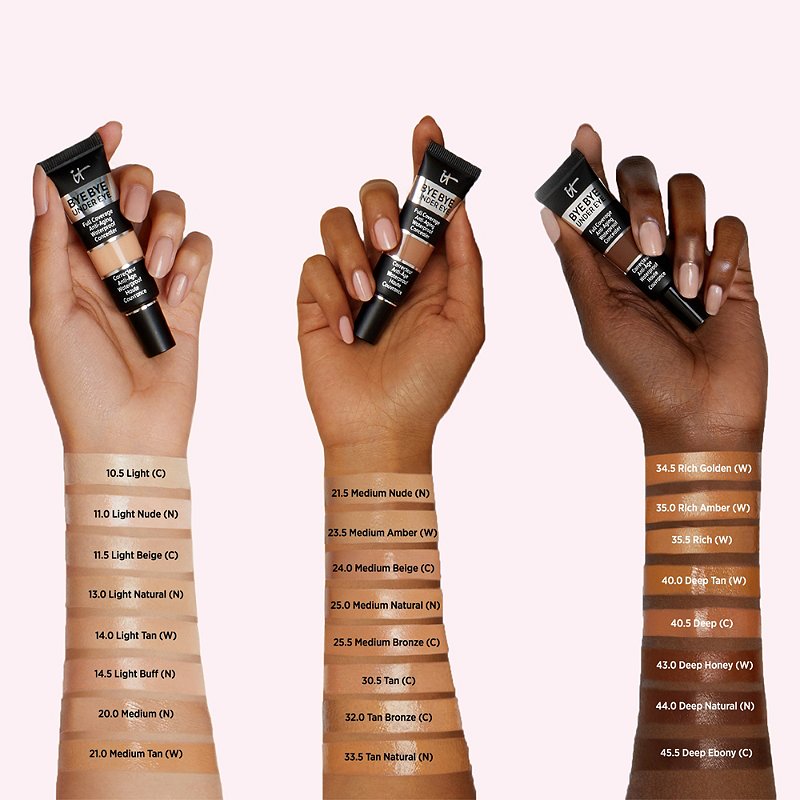
Don’t Over Powder
Creamy products tend to move, so you have to settle them in place with powder. This may be the general rule, but you need to adapt a bit for dry skin because you risk making your skin look dull, ruining your entire effort from the previous steps.
Dry skin doesn’t need that much power anyway because it holds makeup better throughout the day. This happens because makeup is dissolved by oils, which dry skin lacks, as explained at the beginning of this article. So makeup products won’t slide around as much on this skin type, but it still needs to be set lightly in certain areas.
You need to use a very light powder in small amounts in the under-eye area, so you make sure the concealer doesn’t start settling into fine lines as the hours pass. Plus, I find that too much shine from the concealer will attract light and emphasize protruding areas, such as under-eye bags. So cutting that shine with a powder is a good idea.
Choose a very fine powder and use it sparingly after you give this area one more blend, so you don’t set in place a concealer that’s already settled into wrinkles.
My advice is to stay away from mattifying powders for the rest of your face because you want to keep that luminous finish you’ve achieved with the hydrating foundation. You can even use a satin-finish powder, but avoid the very glittery ones because they will emphasize imperfections (wrinkles, pores, dark spots).
Use a tiny amount of powder in the center part of your face, then add it to the cheekbone area if you will use powder contour and blush. If using liquids or creams here, skip the powder because you won’t be able to blend a creamy product properly on top of a powder.
For this demonstration, I am using a new powder from Laura Mercier in a warm color; it has a beautiful iridescence, giving the complexion a beautiful glow-from-within look.
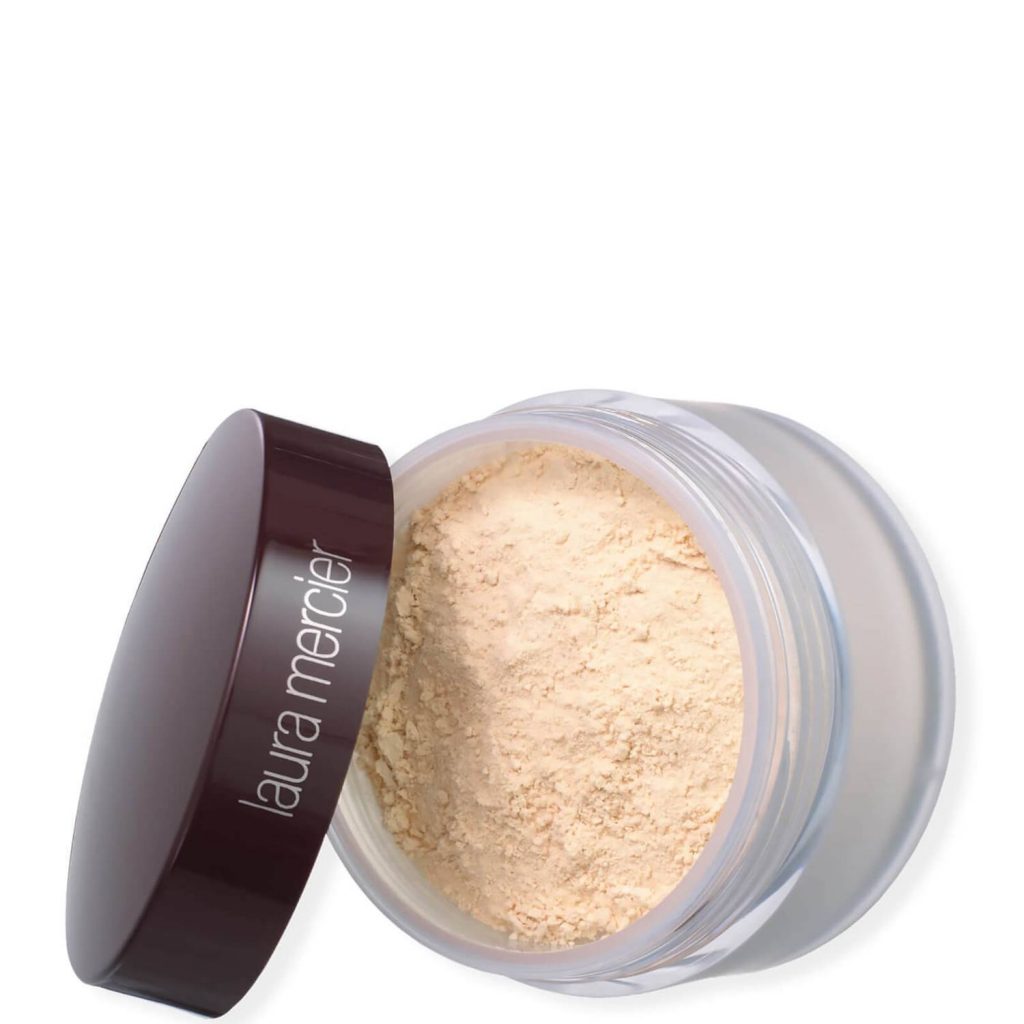
Contour and Blush
After you’ve finished your dewy base, it’s time to add a little color and definition to this blanc canvas, with blush and contour. For dry skin, you can use powder products but go for the buttery, satin-finish ones or creams and liquids that add a dewy finish to enliven your cheeks.
Use contour to give a bit of definition to your face on your forehead, in the hollows of your cheeks, and underneath the jaw. You can choose a cream or a powder, but make sure it’s a cool-toned color and that you blend it well.
A satin-finish blush will complete the look, especially if you choose a warm color with a natural effect. A liquid or cream blush will give you a healthy glow and melt into the foundation base perfectly if used directly on top of the creamy base (no powder in between). If you are going for a powder blush, choose a fine powder with a luminous finish.
If you are using cream products, you can do this with either a soft brush or with the side of your beauty blender. No matter the tool, make sure you blend the contour very well, with no harsh lines in between them, for a seamless result.
I use another Laura Mercier powder for this look, this time in a terracotta shade. I double it as a contour/ blush to give the complexion a bit of color and depth; I am using it where the sun would usually hit to give my skin a summer glow. I follow up with another powder from the same line and use it on the high points of the face – on top of the cheeks, on the brow bone, nose tip, and upper lip.
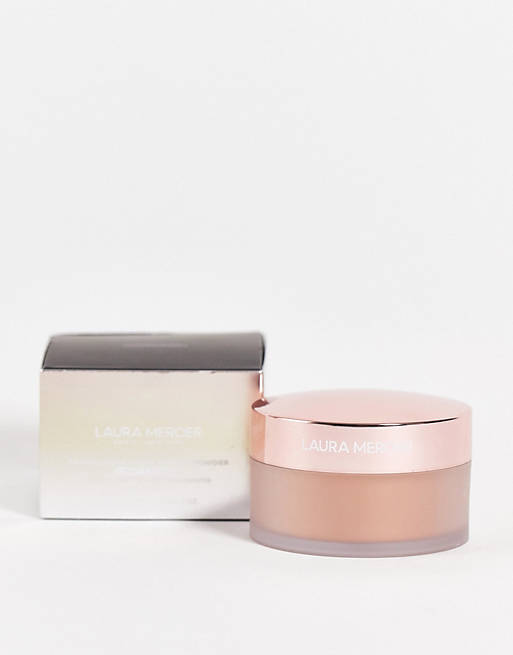
Eye Makeup
For eye makeup, you can go for the usual powder eyeshadows or use cream eyeshadows; these give a beautiful satin finish, and they are very quick and easy to use. In a dry skin complexion, the eyelids are not as oily as the other skin types, but it’s still a good idea to use a primer. This way, you will ensure your makeup stays intact throughout the day.
For this demonstration, I am using stick eyeshadows that can be applied directly from the tube. I am taking a khaki green across my mobile lid up into the crease, leaving bare the inner corner. I am blending the edges with a brush and taking it a little above the crease for definition.
I will follow up with the same type of stick, but in a plum shade, and place that in the outer corner, almost like a winged liner; then blend that softly, so it’s more gradual, instead of a harsh line. I finish the eyeshadow part with another stick in a shimmery gold shade, placing it in the inner corner for added luminosity.
Next, you can finish the look by curling your lashes and applying mascara; I have lash extensions on, so it’s enough to give them a comb-through. The eye look is now complete, and it was effortless, with a beautiful glowy finish. Fill in the brows as you normally would, using a flattering color and avoiding that overdone look.
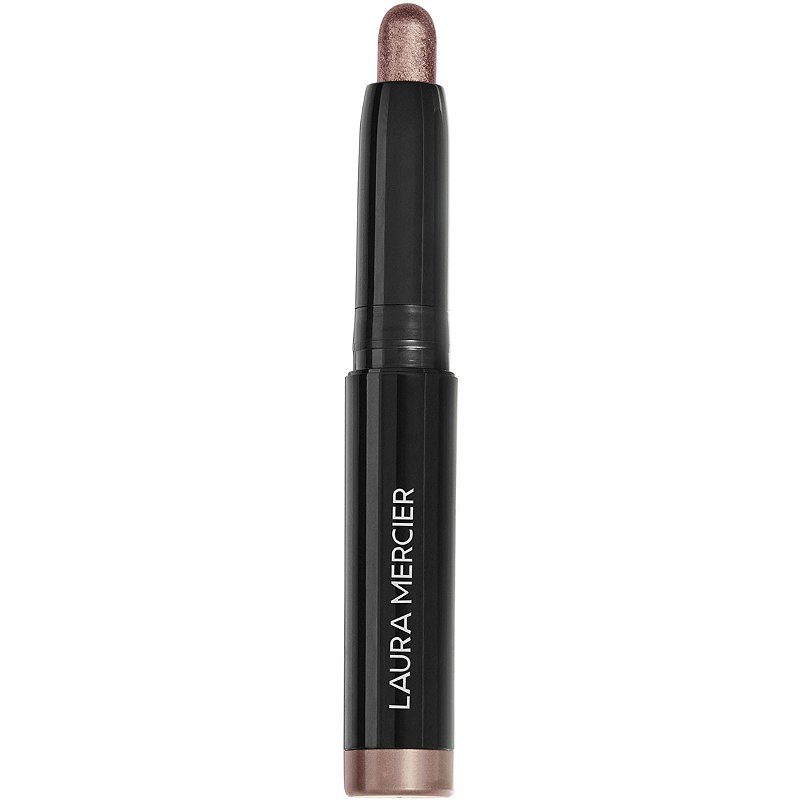
Hydrate the Lips
If you have dry skin, you probably suffer from very dry and even cracked lips, too. Lips are a very sensitive area that tends to be even worse when having a skin type that lacks oils or using treatments like retinoids, either applied on the skin or taking them in oral form.
So taking special care of your lips is a must, to get rid of the flaky skin and uncomfortable feeling, for a smooth application of makeup. On a day-to-day basis, use a heavy balm to keep them hydrated, like my trusted Lansinoh Lanolin Cream.
You can even do a little layering of products at nighttime, much like I explained for the face. Start by applying a hyaluronic acid-based toner or serum on damp lips, and then follow up immediately with a heavy occlusive to seal in the moisture (the Lansinoh cream works excellent).
When it’s time for applying makeup, pat down the lips with a paper towel if they are too greasy because otherwise, the lip product will slide off immediately. Whatever you use next is based on personal preference or the look you are going for; it can be anything, from a colored lip balm to liquid lipstick or a sheer hydrating lipstick.
Make sure you stay clear of matte lip products, whether classic lipstick or liquid ones; these dry down quickly for a long-lasting effect and have a matte finish that emphasizes lines and clings to dry patches. They will dry your lips even more and give you a very unflattering look.
I am using my trusted Nyx pencil in a perfect nude shade, and I follow up with a Lancome liquid lipstick in a very moisturizing formula that lasts a long time.
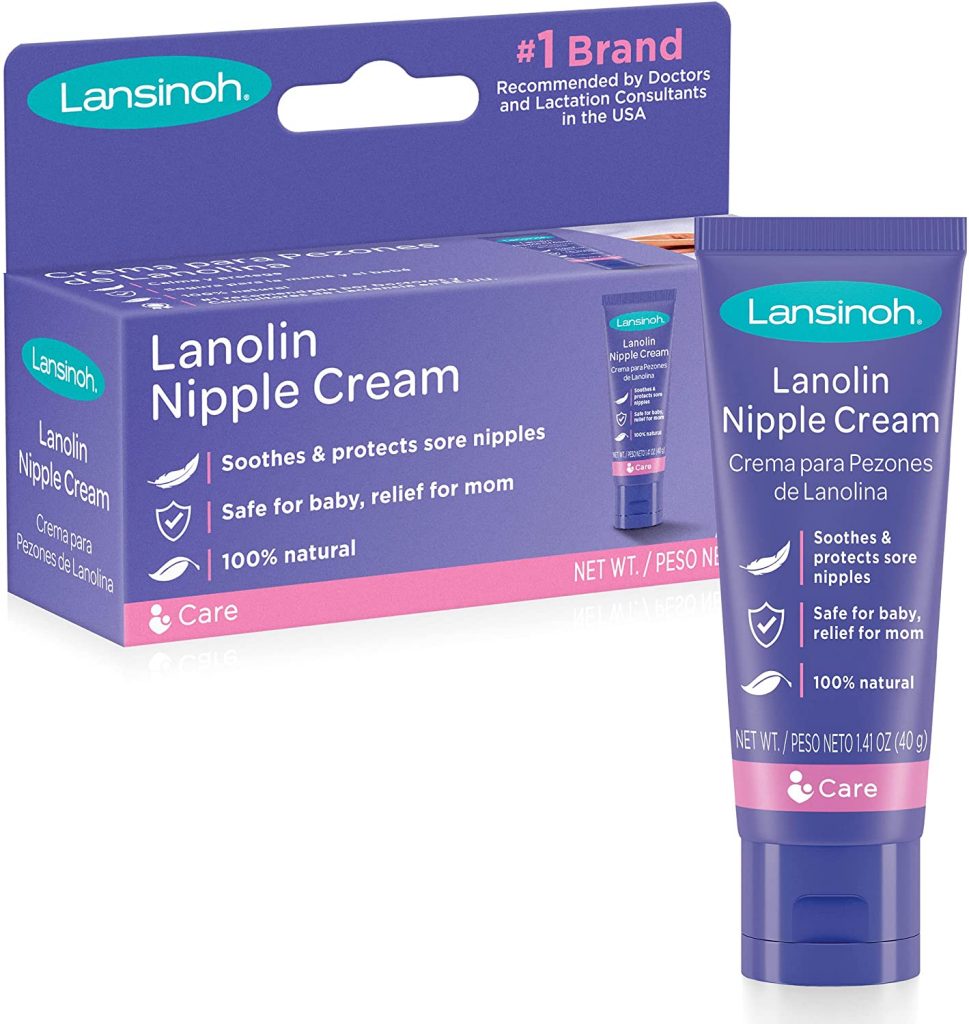
Dry Skin Can Feel Beautiful & Comfortable Again
Dry or dehydrated skin is definitely a pain point for many of us, and it can worsen after menopause because the oil gland becomes less active. Whether you are experiencing itchiness, increased sensitivity, or flaky skin that looks dull and lifeless, we are in this together.
There are many ways you can make dry skin feel more comfortable and regain that fresh and plump look. This article is a comprehensive guide to doing just that by understanding what causes dry skin and what mistakes to avoid that could be making it worse.
Remember that self-care is an act of self-love, and we all deserve some special me-time. Try to do that as often as possible, whether it is something as simple as a pampering ritual for your skin.





